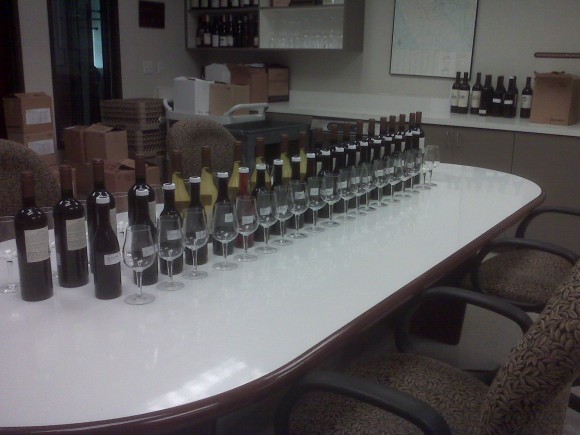Quarterly Inventory Tasting: 7 Winemakers Taste 300 Wines
I love the cyclical nature of the wine business. There’s an annual cycle of the vine, and similarly, a cycle of wine. We just finished the first cycle in the life of the 2010 vintage wines with our Harvest wrap up party. Now, it’s time to address the next step in the cycle of the 2009 vintage wines.
Our task at hand: The Quarterly Inventory Tasting (QIT); 300 wines in three days.
The 2009 red wines I work on have been quietly aging in barrels over the last year. They spent the Harvest tucked away safely while the frenetic energy of the new vintage swirled about them. But it’s time now to make a final assessment of those wines, determine where in our portfolio they will find their home, and begin to make decisions about the blends for this 2009 vintage.
At Kendall-Jackson, our modus operandi is to ferment wines separately in tanks that represent individual blocks. We age the wines like this in order to assess the quality of each lot and give it the right attention and direction.
And now it’s time to check on the wines.
Check out this spread!
Day 1: 100 wines (1 Carmenere, 5 Malbecs and 94 Merlots).
Day Two: 101 wines (all Cabernet Sauvignon).
Day Three: 99 wines (75 Cabs, 15 Cab Francs and 9 Petit Verdots).
We source all of our Bordeaux varieties from three counties in the North Coast: Mendocino, Sonoma and Napa. The wines are all from different areas you’ve likely heard of, from Alexander Valley to Knights Valley to Mt. Veeder and Atlas Peak. These are some pretty serious wines. Tasting 100+ tannic reds in a day is a feat of endurance. You might need a nap afterward. You certainly might want to refresh your palate with something other than a red wine. I find rosés to be particularly helpful at this stage. Either that or a beer!
When I first started participating in the QIT, I could taste through 10 or 12 wines before I felt everything started to lose its flavor. I would take multiple breaks, grab a bite and stretch my legs. The process took the better part of the day. I think somewhere around the third year of doing the tastings, I realized that it just wasn’t fair to the last wines I tasted before taking a break to be compared to the first wines after I sat back down.
So now, like the rest of the winemakers, I taste through all 100 wines in one sitting; pausing only long enough to pour wines into the glasses as I move along.
At the end of the day the results are always the same: black teeth and a black tongue; but I leave with a great appreciation for the vintage, the quality of the wines and the terroir of the vineyards where we farm and source our grapes.






